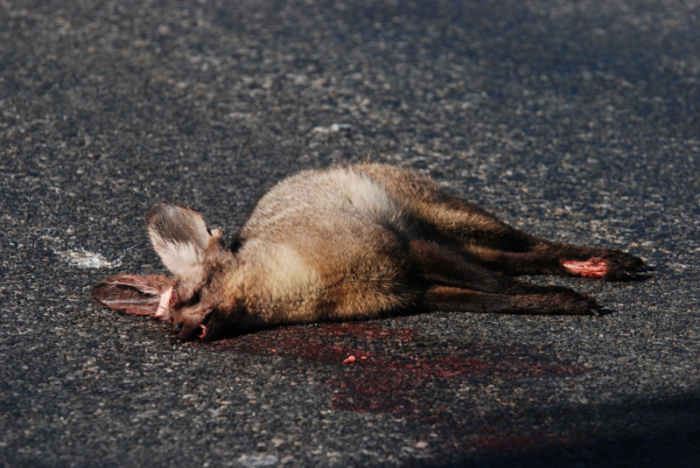Roads are the most widespread form of ecological health and integrity loss. Currently, roads are causing severe conservation threats to apex predators globally, and those impacts are expected to increase in the near future if development is not planned properly.
Itxaso Quintana, a Research Associate of the BDI, is one of the lead authors of a newly-published research paper which examined how the network of both current and future planned roads will impact 36 apex predator species across the globe. The paper is published in Scientific Reports, one of the journals in the prestigious stable of journals belonging to Nature.

One of the most interesting things about the research is that it was done by a group of just-graduated MSc students from the Erasmus Mundus Joint Masters – International Master’s in Applied Ecology (IMAE). The “joint masters” was funded by the European Commission, and the students moved between the participating universities, in Europe and South America. Almost every member of the class of 25 students represented a different country, with at least one student from every continent! Co-authors of this paper represented South Africa, Colombia, Brazil, Guatemala, Nepal, Spain and France, which gives the paper an international perspective. One of the academics who coordinated this master’s programme, Professor Freddie-Jeanne Richard (Département de Biologie des Organismes et des Populations, Université de Poitiers, Poitiers, France) gave the students the opportunity to form groups to work on reviews of particular topics, and reserved budget so that the publication costs were covered. This is a clever strategy, because it encouraged the group of students, early career scientists, to develop collaborative research skills, and enabled them to publish a substantive paper in a high-ranking journal.
In this paper, the authors assess the impact of existing roads and highlight that currently all 36 apex predator species are exposed to the current road network, suffering from road kills, to increase of poaching and habitat loss due to the increase of accessibility to otherwise remote areas. Asia is a hotspot of high-risk apex predators, hosting 8 of the 10 species most at risk from roads, and with the Sloth Bear, Tiger and Dhole as the most affected.

In Africa, the Brown Hyena, a predator endemic to Southern Africa, is the most exposed to roads making it at high risk from roads. Additionally, the authors show that in South Africa, 20 Brown Hyenas have been killed by collision since 2011, and in total, more than 400 apex predators have been killed on the roads in the last two decades.

The authors also propose a widely applicable method to assess the potential impact of future planned development and applied it in three areas that hold critical ecosystems from apex predators: the Brazilian Amazon, Africa and Nepal. They found that roughly 500 protected areas will be intersected by roads, threatening apex predators’ habitats and ultimately ecosystem functioning.

If not planned properly, Scientists warn that roads crossing Tanzania’s Serengeti National Park, in particular, are expected to devastate one of the world’s greatest animal migrations, causing a domino effect on healthy apex predator populations. Finally, the authors emphasize that even if roads can lead to positive social and economic outcomes, this must be strategically planned so that they avoid wilderness and important conservation areas. Future roads should simultaneously adopt mitigation measures such as wildlife crossing areas.

This study started because all authors were aware of conservation issues and realized that roads have already impacted most of the earth’s ecosystems. Apex predators, in particular, are acutely threatened by roads, due to their large spatial ranges, low population densities and reproduction rates. They are at the same time charismatic species and vital to the structure and functioning of ecosystems.

This blog is illustrated by photos from the MammalMAP section of the Virtual Museum. Records of road kills, regardless of species (and regardless of whether it is a mammal, a reptile, or bird), are really valuable, because they help us understand which species are impacted and where. So if you see a road kill while you are driving, do consider throwing a U-ie, going back and taking a photograph and uploading it to the Virtual Museum. Within the Virtual Museum upload system, there is a box which can be ticked to indicate that the record is a road kill.
The paper is Open Access at this link:
Quintana I, Cifuentes EF, Dunnink JA, Ariza M, Martínez‑Medina D, Fantacini FM, Shrestha BR, Richard F-J. 2002. Severe conservation risks of roads on apex predators. Scientific Reports 12: 2902. https://doi.org/10.1038/s41598-022-05294-9

